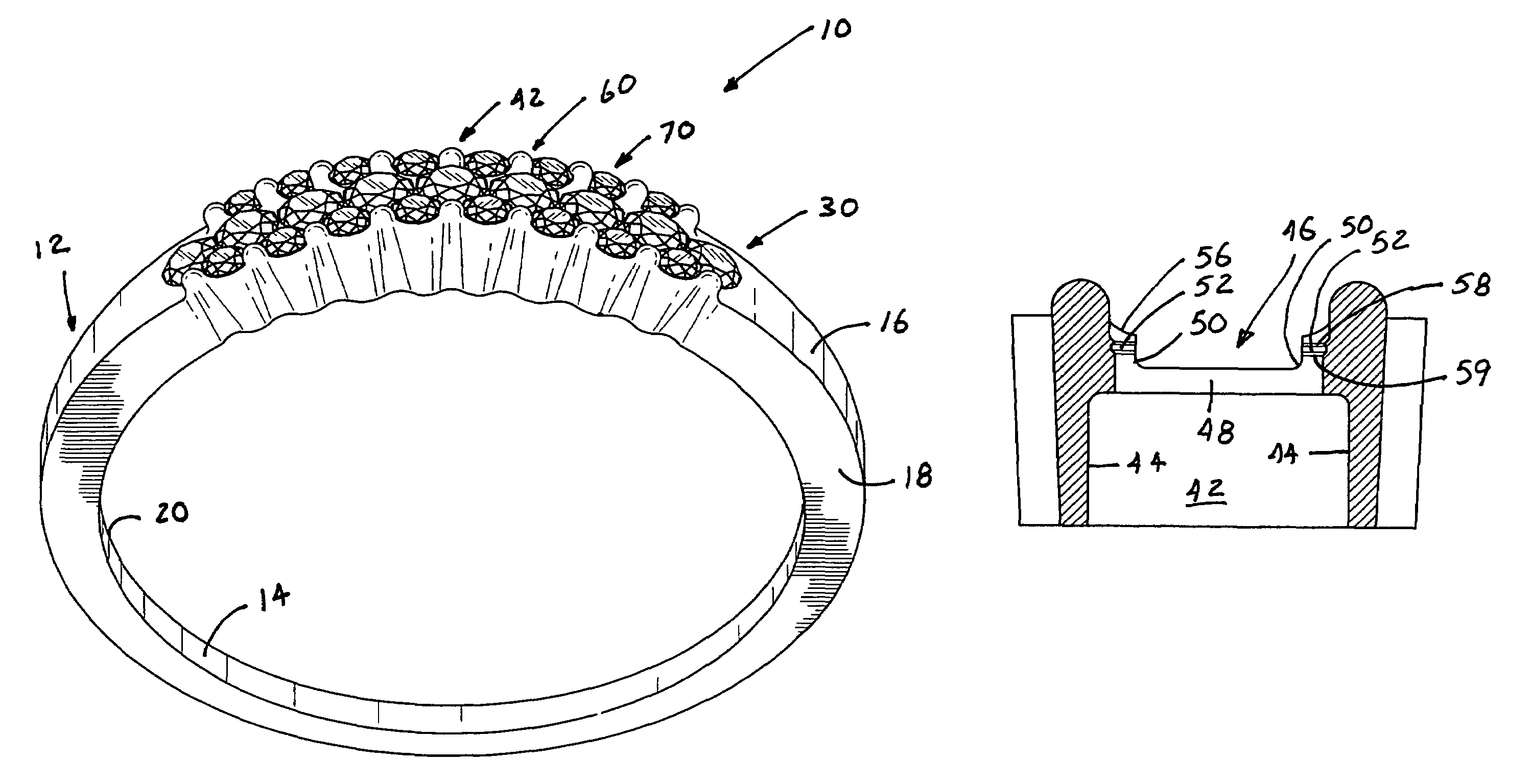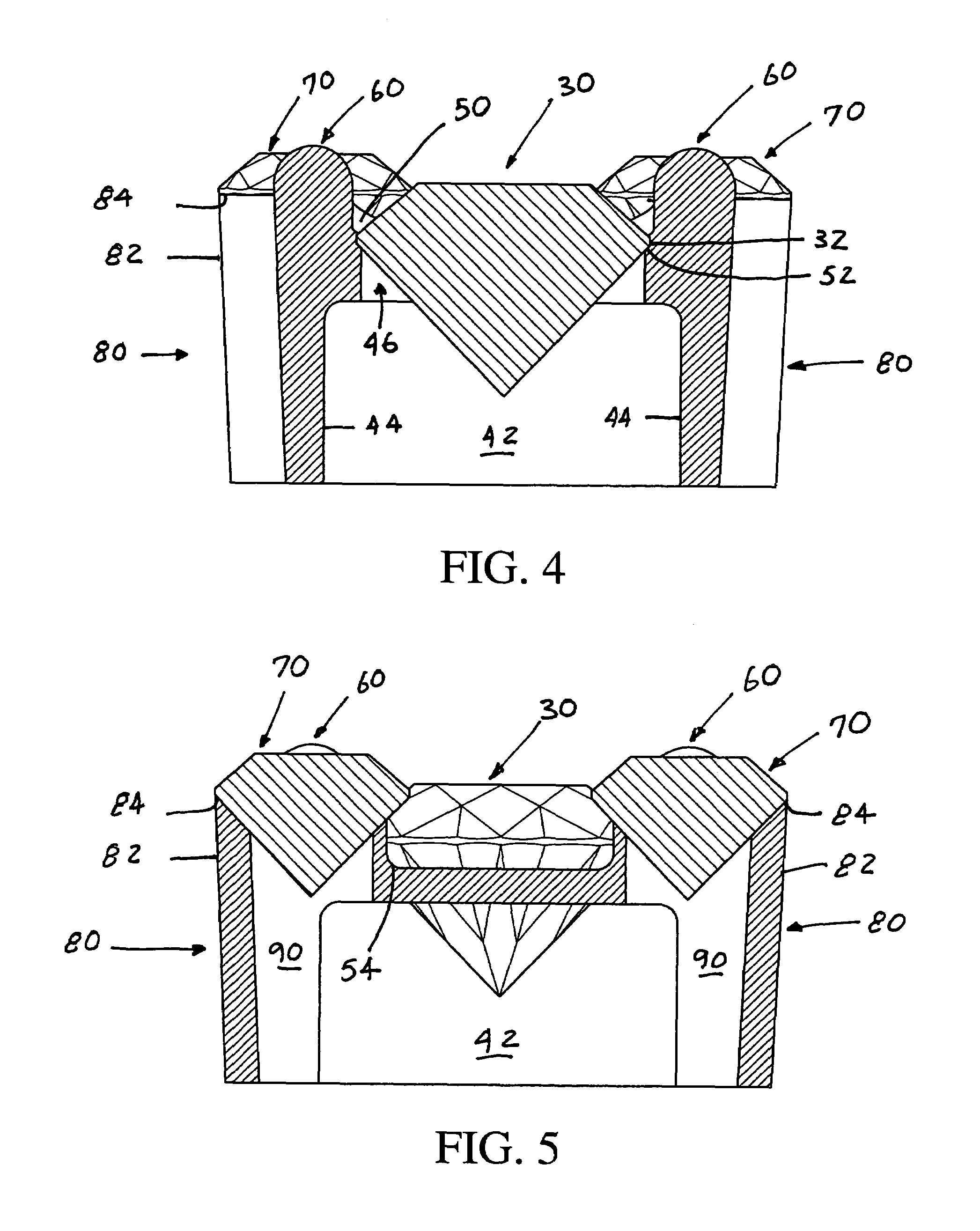Jewelry article utilizing a linear stone setting
- Summary
- Abstract
- Description
- Claims
- Application Information
AI Technical Summary
Benefits of technology
Problems solved by technology
Method used
Image
Examples
Embodiment Construction
[0032]Referring initially to FIG. 1, there may be seen generally at 10 a ring in accordance with the present invention. Ring 10, as depicted in FIG. 1, and as described hereinafter, is intended to be exemplary of a number of articles of jewelry which can be made in accordance with the present invention. While the following discussion and description will be presented in the context of its use with the ring 10 shown in FIG. 1, it will be understood that the invention is not to be limited to its use with a ring or a bracelet or an earring or a pendant or any other specific piece of jewelry. The depiction of a ring as one embodiment of the invention is for the purpose of depicting one article of jewelry that can utilize the subject invention which, in the broader scope, is directed to the provision of a variety of articles of jewelry in which a primary center row of stones are arranged in a linear setting and are bordered by flanking accent or trim stones. The structure and method of m...
PUM
 Login to View More
Login to View More Abstract
Description
Claims
Application Information
 Login to View More
Login to View More - R&D
- Intellectual Property
- Life Sciences
- Materials
- Tech Scout
- Unparalleled Data Quality
- Higher Quality Content
- 60% Fewer Hallucinations
Browse by: Latest US Patents, China's latest patents, Technical Efficacy Thesaurus, Application Domain, Technology Topic, Popular Technical Reports.
© 2025 PatSnap. All rights reserved.Legal|Privacy policy|Modern Slavery Act Transparency Statement|Sitemap|About US| Contact US: help@patsnap.com



